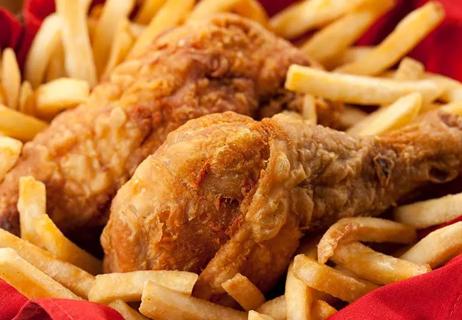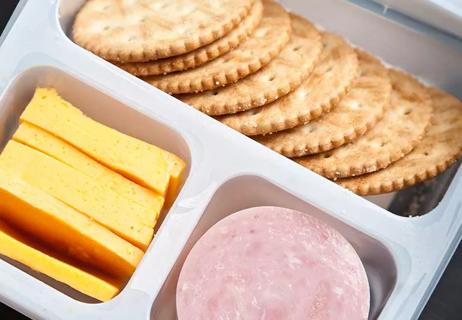Type 2 diabetes isn’t inevitable with these dietary changes

Being diagnosed with prediabetes means you’re on your way to developing Type 2 diabetes, a disease that greatly increases your risk of heart attack and other serious health issues.
Cleveland Clinic is a non-profit academic medical center. Advertising on our site helps support our mission. We do not endorse non-Cleveland Clinic products or services. Policy
But there’s good news: Type 2 diabetes isn’t inevitable after you’ve been diagnosed with prediabetes. Dietitian Julia Zumpano, RD, LD, says making healthy dietary changes can delay or even prevent the onset of Type 2 diabetes.
“The goal is to reduce your carbohydrate intake by choosing more complex carbs and exercising to burn them off,” she says.
Here’s a rundown of foods to avoid, what to eat instead, what to enjoy in moderation and, importantly, how to successfully make these changes to your diet and lifestyle.
You’ve probably heard the term “blood sugar,” but what does it actually mean?
Your blood sugar is the amount of sugar currently circulating in your bloodstream. When you have prediabetes, your blood sugar is higher than it should be, but not yet high enough to be Type 2 diabetes.
Following these guidelines can help you lower your blood sugar levels, which can ultimately reverse your prediabetes.
Rethinking your diet to reduce the risk of diabetes doesn’t mean giving up the foods you love. But it does mean eating less of them.
The first rule is to cut down on simple carbohydrates like sugar. “Sugar is a quick-release carb, which means that when you eat it, your body quickly releases glucose, or sugar, into your bloodstream,” Zumpano explains. “This causes a spike in your blood sugar level.”
Foods that have added sugar include:
Cutting out sugary drinks is one of the simplest (and, for some people, the easiest) ways to lower your blood sugar. “They have no fat or protein to prevent the carbs from rocketing your blood sugar,” Zumpano continues.
That does just mean saying see ya to soda. Eliminate or scale way back on:
Water is your best beverage bet, and you can even infuse it with fruits and herbs to jazz it up a little. Other good substitutes include unsweetened tea (hot or iced), coffee and sparkling water, so long as they don’t include added sugar.
Your next move is to cross off empty-calorie “white foods,” including:
“Instead, begin choosing whole-grain breads and pastas, brown rice and wild rice, Zumpano says. Start experimenting with other grains and starches, like:
“Focus on whole-ingredients foods that have at least three grams of fiber per serving,” Zumpano suggests, “and limit your carb intake to about 1 cup (or two slices of bread) per meal.”
“Protein slows the rate that carbohydrates enter your bloodstream, which keeps blood sugar levels steadier,” Zumpano explains. Eating protein at every meal can help you feel full and reduce the urge to snack.
Healthy proteins include:
If you have cardiovascular disease, limit red meat and stick with skinless poultry and fish.
“Load up on vegetables, particularly non-starchy ones,” Zumpano says. “The fiber in veggies and legumes will help you feel full and satisfied.”
Because fiber slows down digestion and absorption, you’re less likely to get hungry between meals and reach for a sugary snack.
The American Diabetes Association shares an even more complete list of veggies that are good for keeping your blood sugar low.
And if you’re eating canned vegetables, be sure to drain them and rinse them with water, which will reduce the amount of sodium you consume when you eat them.
Fruit is a natural source of sugar that you can enjoy in moderation. “Limit portion size to one cup or less at a time,” Zumpano says. And choose lower-sugar fruits, like berries and kiwi, most often.
To slow the rate of glucose entering your bloodstream, pair fruit with a protein source, like a handful of nuts or seeds, 2 tablespoons of nut butter, plain yogurt, cottage cheese, a boiled egg or a string cheese.
Alcoholic beverages are a form of carbohydrate and should be consumed in moderation — in general, and especially if you’ve been diagnosed with prediabetes.
“If you’re going to drink, choose spirits with a no-calorie mixer, or an option like light beer, seltzer or dry wine,” Zumpano says. They contain the fewest carbs.
When you eat is nearly as important as what you eat. “Don’t skip meals, or you’ll get hungry and tend to overeat later,” Zumpano advises.
Eating late at night is associated with elevated sugar levels in people with prediabetes, so she also recommends making lunch your largest meal and not eating in the three hours before bed. If you do need a snack, keep it small and healthy, like a few carrot sticks or a string cheese.
If you need help understanding exactly what you should and shouldn’t eat, take a close look at a Mediterranean-style diet. This type of eating plan is especially likely to help get your blood sugar levels back on track.
That said, there’s no single prescribed diet that will reverse prediabetes, so you can try to adopt overall healthier eating habits or experiment with specific diets. In addition to the Mediterranean diet, you may want to consider intermittent fasting or the ketogenic (keto) diet.
“The most critical thing is being able to stick to whichever diet you pick, so it’s important to find something that works for your lifestyle, your tastes and your preferences,” Zumpano says.
Making changes to lifelong eating habits can be difficult, but it may help to think about all the good you’re doing for your body in the long run.
A 2017 study found that when it comes to warding off Type 2 diabetes, lifestyle changes like exercising more and adopting a healthy diet may actually work better than standard treatments like medications.
“Early intervention in prediabetes is the key to successful reversal,” Zumpano says, “and a healthy diet plays a huge role in that process.”
To learn more about managing your prediabetes, listen to the Health Essentials Podcast episode, “Preventing and Reversing Prediabetes with Dr. Shirisha Avadhanula.” New episodes of the Health Essentials Podcast publish every Wednesday.
Learn more about our editorial process.

Type 1 diabetes happens when your body doesn’t make insulin, while Type 2 happens when your body can’t use insulin properly

You can counter the risk of prediabetes-related heart attack or stroke by eating more fruits, vegetables and whole grains, as well as exercising regularly

There is an indirect link between the sweet substance and the condition

The short answer: Yes, but you need to eat it in moderation and keep track of how much you consume

Sweet potatoes are great, but sweetened drinks aren’t so great

Updated food label guidelines make it easier to track added sugars in your diet

Cigarettes increase your risk of developing the condition and worsening its effects

They’ve been altered to include fats, starches, sugars and hydrogenated oils

Your metabolism may torch 1,300 to 2,000 calories daily with no activity

A gentle touch in all the right places may help drain your sinuses